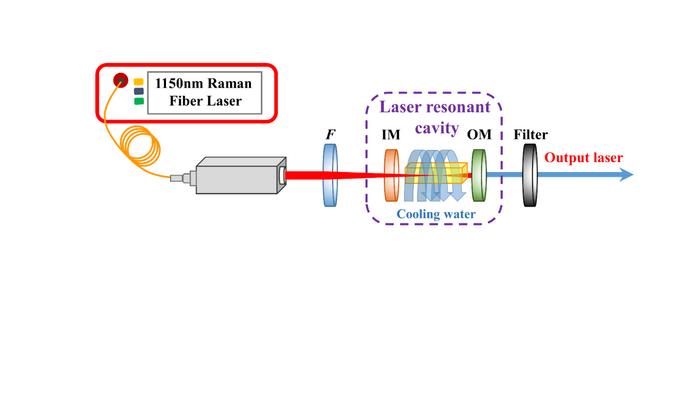Recently, a research group led by Prof. SUN Dunlu from Hefei Institutes of Physical Science (HFIPS), Chinese Academy of Sciences, successfully synthesized novel mid-infrared Ho,Pr:YAP and Er:YGGAG crystals using the Czchralski (Cz) method, and improved the continuous-wave laser performance of laser diode (LD) side-pumped Er:YSGG crystal through thermal bonding technology.

Credit: ZHANG Huili
Recently, a research group led by Prof. SUN Dunlu from Hefei Institutes of Physical Science (HFIPS), Chinese Academy of Sciences, successfully synthesized novel mid-infrared Ho,Pr:YAP and Er:YGGAG crystals using the Czchralski (Cz) method, and improved the continuous-wave laser performance of laser diode (LD) side-pumped Er:YSGG crystal through thermal bonding technology.
The research results were published in Optics Express.
The 2.7~3 μm mid-infrared lasers are located at the strong absorption band of water molecules, which have wide application prospects in fields such as biomedical, optical remote sensing, and nonlinear optics.
In recent study, scientists have found a way to make lasers more powerful and efficient. By adjusting the components in the laser material, they discovered that the performance could be improved. Specifically, they increased the concentration of one component of Ho3+ ions and added just the suitable amount of another component of Pr3+ ions. This adjustment helped to make the laser operation more efficient by inhibiting the “self-termination effect”. Using the Cz method, they were able to grow a novel Ho,Pr:YAP crystal, to emit laser at around 3 micrometers. It’s a significant improvement over older Ho:YAP laser because it needs less pump power to start working and output laser more efficiently.
Meanwhile, scientists have discovered that by co-doping appropriate amounts of Gd3+ and Ga3+ ions into YAG crystal, the crystal disorder increases, leading to broad emission in the mid-infrared region. Using the Cz method, a new Er:YGGAG crystal has been grown, enabling the realization of the mid-infrared tunable and ultra-short laser around 2.8 micrometers.
To address limitations in continuous-wave laser output, researchers developed a thermal bonding technique. By bonding undoped YSGG crystal to both end-faces of another Er:YSGG crystal, they managed to reduce “thermal effects”. This made the laser performance much better, and a maximum output power of 28.02 watts was achieved.
These researches laid the material foundation for the development of all-solid-state mid-infrared lasers, and provided references for the design and development of novel and efficient mid-infrared laser gain materials.
Journal
Optics Express
Article Title
28.02 W LD side-pumped CW laser operated at 2.8 µm in YSGG/Er:YSGG/YSGG crystal
Article Publication Date
14-Mar-2024



